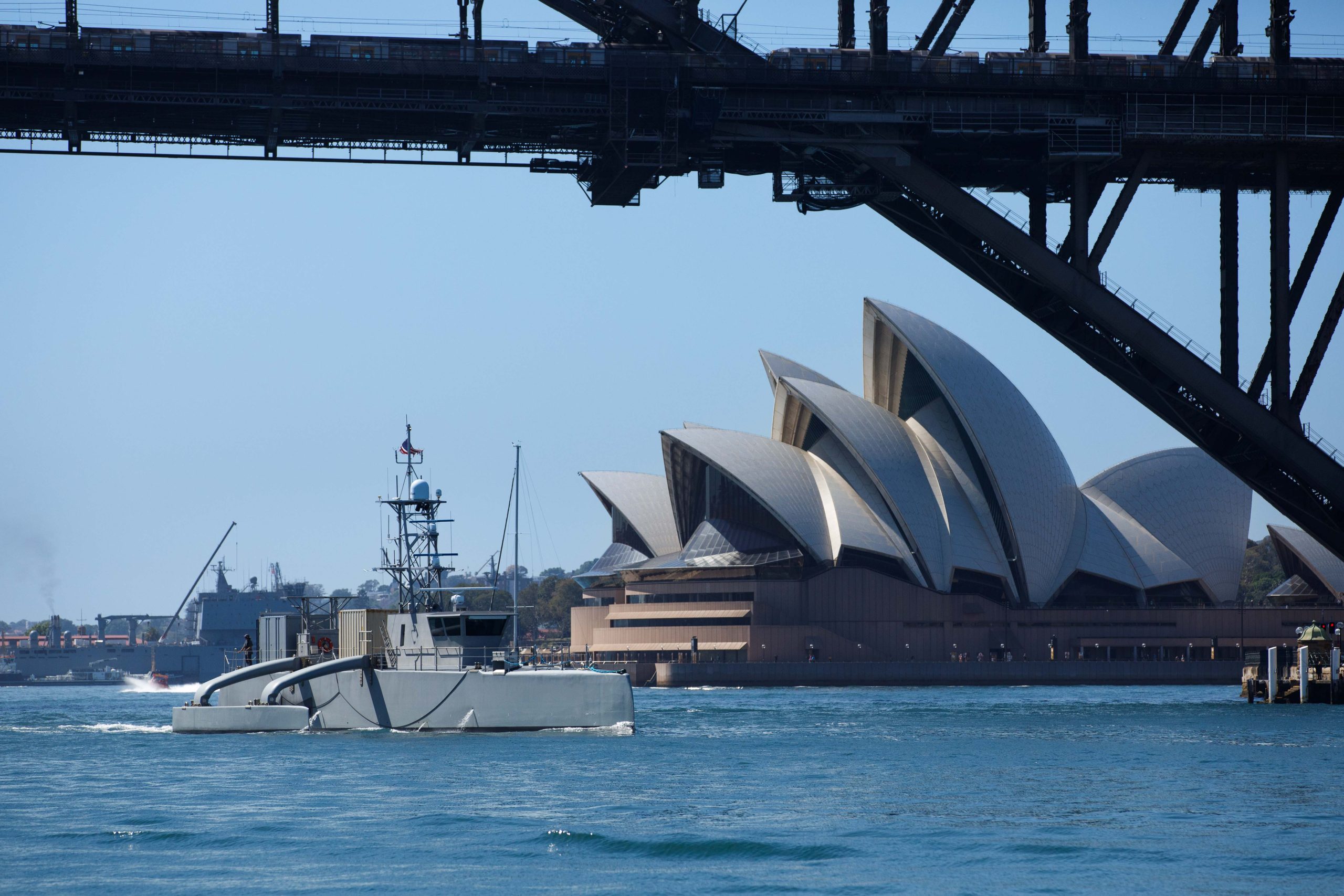
Warships from the United States, Australia, Canada, Japan and New Zealand conducted drills in the South China Sea on Monday while the U.S. Navy’s Ghost Fleet arrived in Sydney, Australia, on Tuesday to conduct drills with the Royal Australian Navy. Meanwhile, Chinese Defense Minister Li Shangfu was dismissed from his post on Tuesday, according to China state media.
Destroyers USS Rafael Peralta (DDG-115), JS Akenono (DD-108) and HMAS Brisbane (DDG41) and frigates HMCS Ottawa (FFH-341) and HMNZS Te Mana (F111) conducted exercise Noble Caribou on Monday in the South China Sea, according to a Tuesday release by the Japan Maritime Self-Defense Force (JMSDF).
“The participating countries in the exercise are maritime nations with long coastlines in the Pacific Ocean, and are like-minded nations that seek to maintain an international order based on the rule of law in order to realize a Free and Open Indo-Pacific,” said Akebono’s commanding officer, Cmdr. Hisato Togawa, in the release.
The exercise consisted of tactical, maneuvering and communication drills. The release also stated that Akebono had been docked into Changi Naval Base, Singapore, from Friday to Monday for refueling and rest. Akebono’s crew toured littoral combat ship USS Gabrielle Giffords (LCS-10), which was also docked in Changi. The two ships together with destroyer USS Dewey (DDG-105) carried out drills in the South China Sea from Oct.16–18.
Also on a regional presence deployment is a Russian Navy surface action group (SAG) comprised of destroyers RFS Admiral Tributs (546) and RFS Admiral Panteleev (548) and fleet oiler Pechenga, which docked into the port city of Surabaya in Java, Indonesia, on Sunday for a port visit according to an Indonesian Navy release. The Russian Ministry of Defense previously stated that the deployment was part of the Russian Pacific Fleet’s training plan and was intended to demonstrate Russian naval presence and to develop and strengthen friendly relations with foreign countries.

In Australia, the Unmanned Surface Vessel Division One’s (USVDIV-1) unmanned surface vessels (USVs) Ranger, Mariner, Seahawk and Sea Hunter arrived in Sydney, Australia, for a scheduled port visit on Tuesday ahead of their participation in bilateral exercises with the Royal Australian Navy (RAN), announced a Wednesday Navy release.
During the exercise, USVDIV-1 will collaborate with the RAN on testing unmanned systems in concert with industry partners to advance understanding of these capabilities and their ability to meet strategic requirements. “I look forward to furthering the strong relationship our navies have worked hard to create,” Cmdr. Jeremiah Daley, commanding officer of USVDIV-1, said in the release.
Littoral combat ship USS Oakland (LCS-24) also arrived in Sydney on Tuesday. Oakland, together with the 4 USVs, is participating in the ongoing U.S. Pacific Fleet exercise Integrated Battle Problem (IBP) 23.2 to develop concepts of operations for future unmanned programs and further integrate USVs into routine operations alongside manned surface combatants. “In order to develop a program as different and disruptive as small, medium, and large USVs, integrating with allies and partners early and consistently in its development is key to our success,” said Daley in the release.
In Guam on Sunday, the U.S. Navy and the Republic of Korea Navy (ROKN) wrapped up the biennial combined theater antisubmarine warfare (TASW) exercise Silent Shark, stated a Navy release. Submarines USS Topeka (SSN-754) and ROKS Jung Ji (SS-073), along with P-8 Poseidon maritime patrol aircraft from Patrol Squadron (VP) 8 and P-3K MPAs of ROKN Squadron 611, participated in the exercise to increase interoperability between the navies. “We significantly increased our ability to carry out joint operations for TASW through fierce, realistic training,” Cmdr. Kim Il-bae, commanding officer of Jung Ji, said in the release “We will deter enemy aggression and are ready to firmly defend our seas.”
In China, state media reported China’s Defense Minister Li Shangfu had been dismissed during the Standing Committee of the 14th National People’s Congress on Tuesday in Beijing, with President Xi Jinping having signed the presidential orders to put the decision into effect. At the meeting, Li was also removed by vote from his post as a member of the Central Military Commission. No announcement was made on Li’s successor and the Chinese Ministry of National Defense has not yet issued any statement on Li’s removal. Li disappeared from public view in August, with the former Chinese defense minister said to be under investigation for corruption. Li’s dismissal is likely to lead to formal charges against him.





